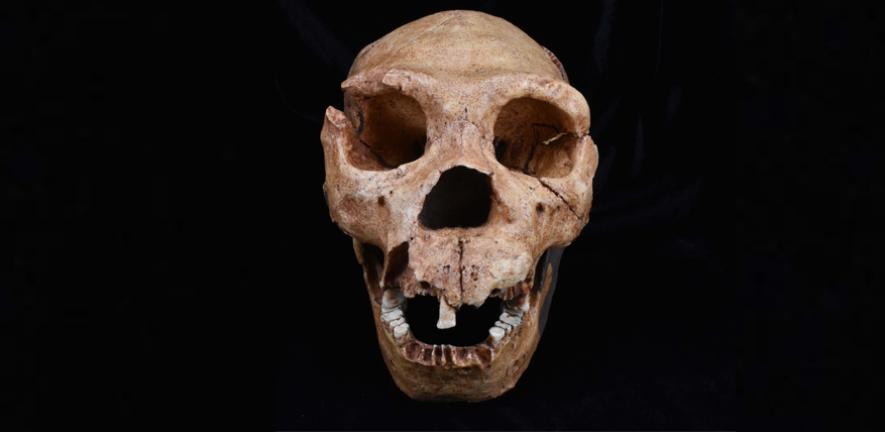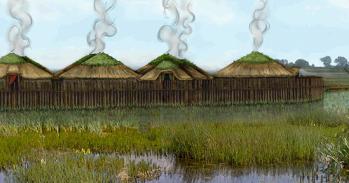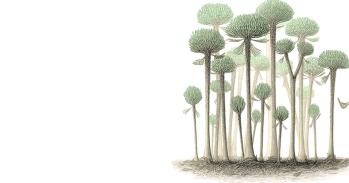
Competition between species played a major role in the rise and fall of hominins, and produced a “bizarre” evolutionary pattern for the Homo lineage.
Competition between species played a major role in the rise and fall of hominins, and produced a “bizarre” evolutionary pattern for the Homo lineage.
This is almost unparalleled in evolutionary science
Laura van Holstein
Climate has long been held responsible for the emergence and extinction of hominin species. In most vertebrates, however, interspecies competition is known to play an important role.
Now, research shows for the first time that competition was fundamental to 'speciation' – the rate at which new species emerge – across five million years of hominin evolution.
The study, published today in Nature Ecology & Evolution, also suggests that the species formation pattern of our own lineage was closer to island-dwelling beetles than other mammals.
“We have been ignoring the way competition between species has shaped our own evolutionary tree,” said lead author Dr Laura van Holstein, a University of Cambridge biological anthropologist at Clare College. “The effect of climate on hominin species is only part of the story.”
In other vertebrates, species form to fill ecological “niches” says van Holstein. Take Darwin’s finches: some evolved large beaks for nut-cracking, while others evolved small beaks for feeding on certain insects. When each resource niche gets filled, competition kicks in, so no new finches emerge and extinctions take over.
Van Holstein used Bayesian modelling and phylogenetic analyses to show that, like other vertebrates, most hominin species formed when competition for resources or space were low.
“The pattern we see across many early hominins is similar to all other mammals. Speciation rates increase and then flatline, at which point extinction rates start to increase. This suggests that interspecies competition was a major evolutionary factor.”
However, when van Holstein analysed our own group, Homo, the findings were 'bizarre'.
For the Homo lineage that led to modern humans, evolutionary patterns suggest that competition between species actually resulted in the appearance of even more new species – a complete reversal of the trend seen in almost all other vertebrates.
“The more species of Homo there were, the higher the rate of speciation. So when those niches got filled, something drove even more species to emerge. This is almost unparalleled in evolutionary science.”
The closest comparison she could find was in beetle species that live on islands, where contained ecosystems can produce unusual evolutionary trends.
“The patterns of evolution we see across species of Homo that led directly to modern humans is closer to those of island-dwelling beetles than other primates, or even any other mammal.”
Recent decades have seen the discovery of several new hominin species, from Australopithecus sediba to Homo floresiensis. Van Holstein created a new database of 'occurrences' in the hominin fossil record: each time an example of a species was found and dated, around 385 in total.
Fossils can be an unreliable measure of species’ lifetimes. “The earliest fossil we find will not be the earliest members of a species,” said van Holstein.
“How well an organism fossilises depends on geology, and on climatic conditions: whether it is hot or dry or damp. With research efforts concentrated in certain parts of the world, and we might well have missed younger or older fossils of a species as a result.”
Van Holstein used data modelling to address this problem, and factor in likely numbers of each species at the beginning and end of their existence, as well as environmental factors on fossilisation, to generate new start and end dates for most known hominin species (17 in total).
She found that some species thought to have evolved through 'anagenesis' – when one slowly turns into another, but lineage doesn’t split – may have actually 'budded': when a new species branches off from an existing one.
For example, the hominin species Australopithecus afarensis was believed to have speciated via anagenesis from Australopithecus anamensis. However, the new data modelling suggests they overlapped by around half a million years.
This meant that several more hominin species than previously assumed were co-existing, and so possibly competing.
While early species of hominins, such as Paranthropus, probably evolved physiologically to expand their niche – adapting teeth to exploit new types of food, for example – the driver of the very different pattern in our own genus Homo may well have been technology.
“Adoption of stone tools or fire, or intensive hunting techniques, are extremely flexible behaviours. A species that can harness them can quickly carve out new niches, and doesn’t have to survive vast tracts of time while evolving new body plans,” said van Holstein
She argues that an ability to use technology to generalise, and rapidly go beyond ecological niches that force other species to compete for habitat and resources, may be behind the exponential increase in the number of Homo species detected by the latest study.
But it also led to Homo sapiens – the ultimate generalisers. And competition with an extremely flexible generalist in almost every ecological niche may be what contributed to the extinction of all other Homo species.
Added van Holstein: “These results show that, although it has been conventionally ignored, competition played an important role in human evolution overall. Perhaps most interestingly, in our own genus it played a role unlike that across any other vertebrate lineage known so far.”

The text in this work is licensed under a Creative Commons Attribution-NonCommercial-ShareAlike 4.0 International License. Images, including our videos, are Copyright ©University of Cambridge and licensors/contributors as identified. All rights reserved. We make our image and video content available in a number of ways – on our main website under its Terms and conditions, and on a range of channels including social media that permit your use and sharing of our content under their respective Terms.




